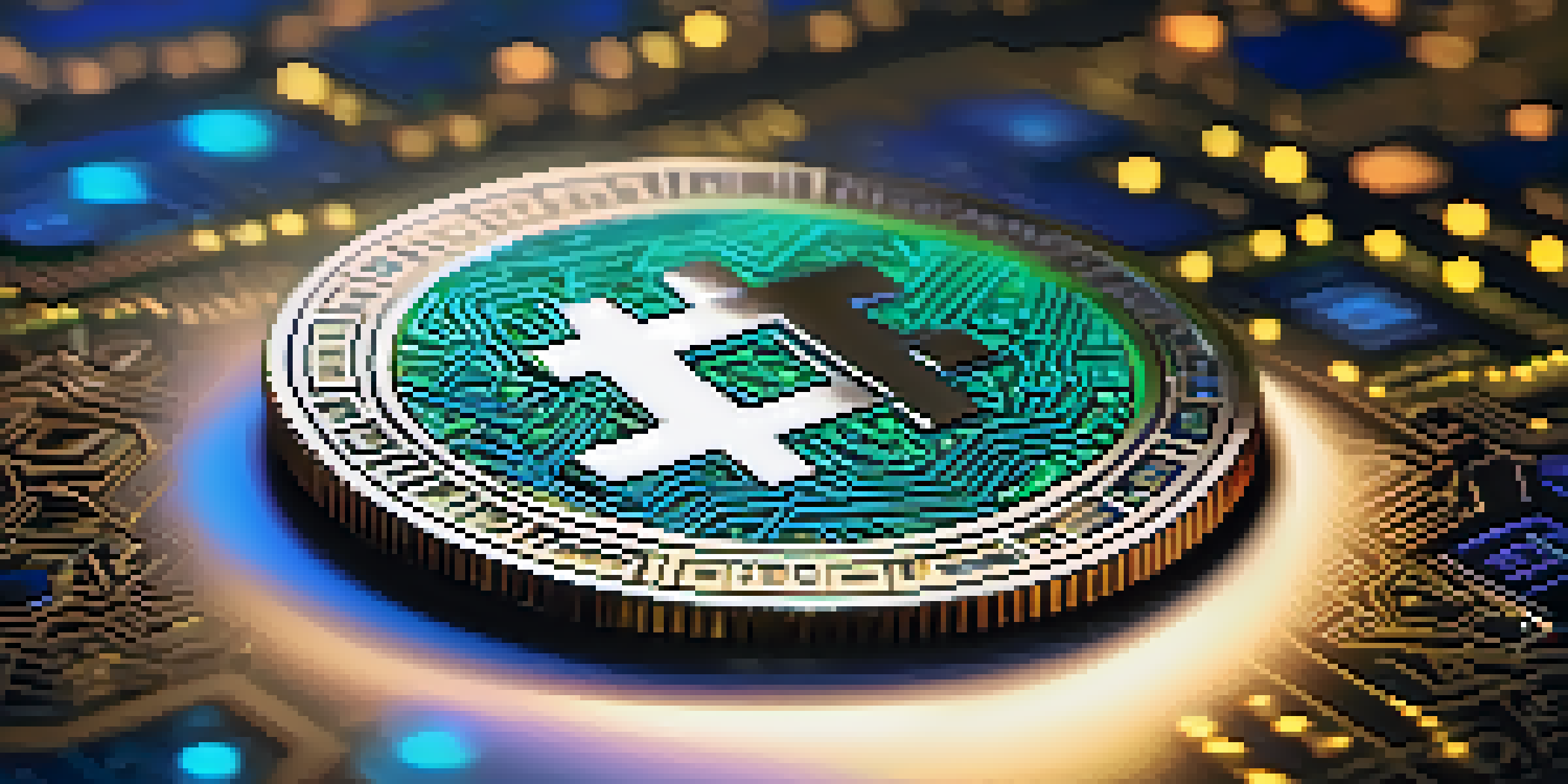How Tokenization Revolutionizes Ownership of Physical Assets

Understanding Tokenization and Its Basics
Tokenization is the process of converting ownership rights into a digital token on a blockchain. This means that instead of holding a physical asset, like a piece of art or real estate, you own a fraction of it represented by a unique token. Imagine having a slice of a pizza where each slice is a token, allowing you to share ownership without losing the whole pie.
Tokenization is transforming the way we think about ownership and investment, making it more accessible to everyone.
This approach not only simplifies ownership but also increases accessibility. For instance, someone who might not have the funds to buy an entire property can invest in a token representing a portion of it. In this way, tokenization democratizes ownership, making it available to a broader audience.
Moreover, tokenization enhances transparency and security. Each transaction is recorded on the blockchain, which is immutable and easily accessible. This means that anyone can verify ownership and transaction history, reducing the risk of fraud and disputes.
The Benefits of Tokenizing Physical Assets
Tokenization offers several advantages, the first being liquidity. Traditionally, selling physical assets can take time and effort, but tokenized assets can be traded on digital platforms almost instantaneously. Think of it like being able to sell a concert ticket online rather than waiting in line at the box office.

Another benefit is fractional ownership. Tokenization enables individuals to own fractions of high-value assets, which was previously unimaginable. For example, you could own a fraction of a luxury car or a historic building, allowing more people to invest in what they love without breaking the bank.
Tokenization Enhances Asset Ownership
Tokenization allows individuals to own fractions of high-value assets, making investment more accessible.
Additionally, the process reduces transaction costs. Without intermediaries like banks or brokers, fees can be significantly lower, making investing more accessible. This can be particularly beneficial for small investors looking to diversify their portfolios.
Real-World Applications of Tokenization
Many industries are already embracing tokenization, particularly in real estate. Companies are creating platforms that allow users to purchase tokens representing shares in properties. This innovation enables more investors to enter the real estate market and provides developers with new funding opportunities.
The future of finance lies in digital assets, and tokenization is at the forefront of this revolution.
Art and collectibles are also seeing the impact of tokenization. Platforms are emerging that allow artists to tokenize their work, giving them a new revenue stream and collectors the ability to buy and sell fractional shares of valuable pieces. Imagine owning a piece of a famous painting and being able to trade your token as easily as swapping baseball cards.
Even luxury goods are getting in on the action. Brands are experimenting with tokenization to ensure authenticity and traceability. By providing a digital token that verifies ownership and origin, consumers can confidently invest in high-end products without fear of counterfeits.
Challenges Facing Tokenization of Physical Assets
Despite its potential, tokenization does face challenges. Regulatory hurdles are one of the biggest obstacles, as laws surrounding digital assets can vary widely across regions. This can create confusion for investors and companies alike, slowing down the adoption process.
Another challenge is the technological barrier. Not everyone is familiar with blockchain technology or how to use it effectively. Educational initiatives are crucial to help potential investors understand how tokenization works and how to navigate this new landscape.
Liquidity and Lower Costs Boost Trading
Tokenized assets can be traded almost instantaneously on digital platforms, reducing transaction costs and increasing liquidity.
Lastly, there’s the issue of market volatility. The value of tokens can fluctuate significantly, which may deter some investors. Finding a balance between innovation and stability will be key to the long-term success of tokenized assets.
How Tokenization Affects Asset Valuation
Tokenization changes how we perceive asset valuation. With fractional ownership, the value of an asset can become more dynamic, as it can be divided into multiple tokens that can be traded. This can create a more transparent market where supply and demand drive prices more accurately.
Additionally, tokenized assets can be evaluated based on their overall community interest, not just traditional metrics. For example, the popularity of a particular piece of art can influence its token value, as more people want to own a share of it.
This shift in valuation perspective can also lead to more informed investment decisions. Investors can see real-time data on how tokens are performing, allowing for better insights into market trends and potential future value.
The Future of Tokenization in Asset Ownership
The future of tokenization looks promising, with experts predicting continued growth and innovation in this sector. As technology advances and regulations become clearer, more industries are likely to adopt tokenization practices. This could lead to a significant shift in how we think about ownership and investment.
Moreover, as public awareness of tokenization increases, more individuals may choose to invest in tokenized assets. This could democratize wealth and create a more inclusive investment landscape, allowing everyone to participate in the market.
Challenges Hinder Widespread Adoption
Regulatory hurdles, technological barriers, and market volatility pose significant challenges to the growth of tokenization.
In summary, tokenization could redefine ownership, making it more accessible, secure, and efficient. As we embrace this change, we may find ourselves in a world where owning a piece of a dream is just a token away.
Conclusion: Embracing the Tokenization Revolution
In conclusion, tokenization is revolutionizing the way we think about ownership of physical assets. By breaking down barriers and increasing accessibility, it opens doors for a diverse range of investors. The ability to own fractions of high-value assets is not just a trend; it's a fundamental change in the investment landscape.
As we continue to explore the potential of tokenization, it's essential to stay informed and adapt to the evolving market. By understanding the benefits and challenges, investors can make educated decisions that align with their financial goals.

Ultimately, the rise of tokenization is an invitation to rethink our relationships with ownership and investment. It’s an exciting time to be part of this revolution, and who knows—tomorrow, you might just own a piece of your favorite piece of art or a historic building, all thanks to the power of tokens.